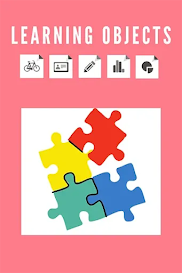Educational and training institutions invest huge sums of money in e-learning, amounting to millions of dollars, and no educational institution is no longer devoid of an e-learning or training program besides the regular program.

Educational institutions have entered into multiple projects and have taken different strategies and models, but in order to achieve the goals of each institution with great effectiveness, the various educational institutions are seeking to have common factors for inter-cooperation in order to reduce the cost of production and make wide use of the digital educational product in a smooth manner.
Your Ultimate Guide to Learning Objects
To reach this goal, it was necessary to search for the existence of a framework that allows the use and reuse of the educational product Learning Objects (LO) by all dealers, and this can only be done with the presence of standard specifications and unified standards for all educational products, which allow interchanges between the various management systems and e-learning management.
Learning Objects Definition
There are many definitions of learning objects, and we conclude from these definitions that learning objects are: digital resources, that are uniquely described and identified, and that can be used to support the learning process.
They can be defined as new elements of new computer-based instruction, which are based on the Object-Oriented Programming ethos of computer science. The basic idea of learning objects is to break the educational content into small parts that can be reused in a variety of learning environments.
We can define learning objects as:
- Digital components, with a relatively small size, can be reused and applied alone or combined with other components, for the purpose of learning.
- Informational clips, containing clear educational objectives, clear instructions for users and can be used again in different situations. According to this definition, learning objects can contain action plans, animations, videos, articles, and more.
- Learning objects contain material and assessment.
What do learning Objects include?
- Here is a list of information that learning objects can include:
- General Course Descriptive Data
- The life cycle includes version and status.
- Instructional Content, including text, images, audio, video, and multimedia files.
- Glossary of Terms, which includes terms, definitions, and terms.
- Quizzes and Assessments, including questions and answers that cover objectives.
- Relationships to Other Courses, including prerequisite courses.
- Education Level, which includes the academic stage, the age group, the actual learning time, and the degree of difficulty.
- Rights, including Cost, Copyrights, and Restrictions on Use.
Metadata
A Learning Object Metadata is a data model, usually formulated in XML, that is used to describe the Learning Object and any other numerical resources used to support learning.
The purpose of using descriptive information is to support the reuse of the learning object, by helping to explore its properties and facilitating compatibility with the LMSs within which it operates.
The learning object metadata contains many of the elements by which the learning object is described, such as:
- Subject: It is the subject of the educational object (the source), and it is expressed in terms and keywords.
- Description Description: A textual description of the content provided by the learning object.
- Language: The language used to formulate the learning object.
- Author: The person, or entity responsible for making the learning object and making it available to the beneficiaries.
- Copyrights: The copyright of the educational object.
Learning Objects Repository
The Learning Objects Repository is a central database in which educational content is stored and arranged.
This is because educational content that is detailed in the form of single objects is often designed in a variety of ways according to the different needs of individual learners.
These educational outputs (objects) are often presented via the Web or through CD-ROM, and may be printed materials; Because single learning objects may be used several times for different purposes.
XML provides this functionality for saving components of educational content.
Examples of Learning Object Repositories
Below is a list of some Learning Object Repositories:
1. Wisconsin Online Resource Center
This online repository contains more than 1,000 learning objects divided into categories for higher education courses. These categories include business, general education, English (as a second language), health, professional development, adult education, and technical courses.
2. Multimedia Education Recourse for Learning and Online Teaching (MERLOT)
This repository is supported by a group of colleges, universities, and educational institutes in the United States, and its digital contents are available to all users. It is designed for higher education, and its database contains more than 10,000 first-hand, reviewed, and categorized educational materials.
Learning Objects Standards
Standards are very important for educational objects, as they are the key to integrating and matching content from several sources.
There are several standards and specifications that have been developed for the distribution of content, the most famous of which are:
Thus, it is possible to develop interchangeable content as long as it is subject to the same standards, which contributes to its easy, quick, and easy reuse, assembling, and disassembly.
Relying on approved standards reduces cost, and thus LMS and other systems such as LCMS content creation and authoring systems can work in harmony with each other.
Why do we use standards?
The use of standards achieves four goals or advantages, namely:
- Accessibility: It allows indexing and searching for classified objects regardless of the system used.
- Interoperability: This means the ability to work with multiple types of devices, systems, navigation programs, and database administrators.
- Durability: It means exceeding the requirements of modification when developing systems and programs.
- Reusability: This allows for modifications and usage by various development tools.




